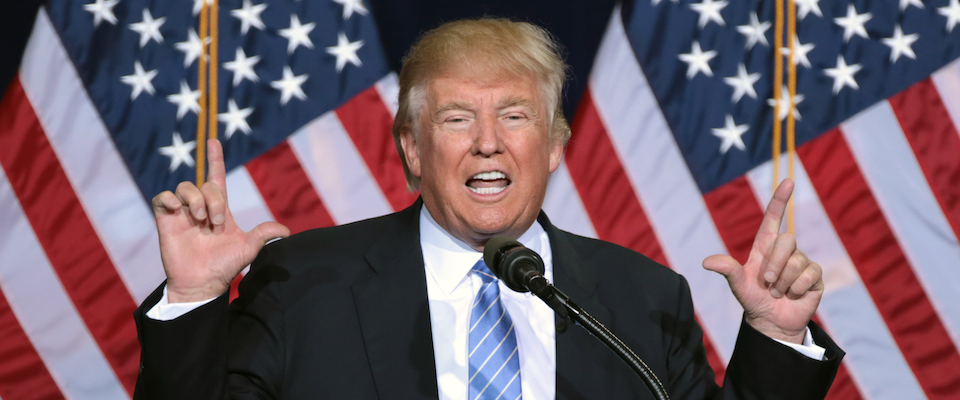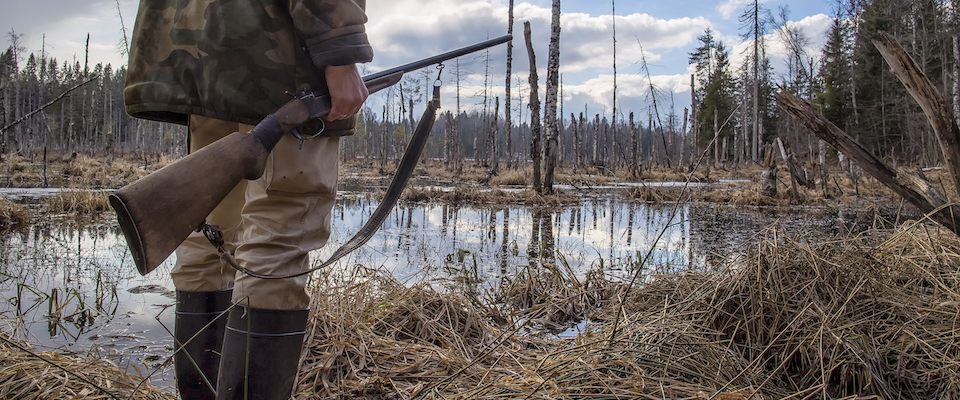Avowed Second Amendment enthusiast Donald Trump drew plenty of scorn and outrage recently when he signed a bill overturning an Obama era restriction on handgun sales to certain mentally disturbed citizens. But the action was significant more as a political statement than functional policy, says UC Berkeley Law Professor and Center for Studies in Criminal Justice Director Franklin Zimring, an authority on Second Amendment issues.
Obama’s rule, after all, required the Social Security Administration to provide records of applicants “adjudicated as mentally defective” to the National Instant Criminal Background Check System, an FBI database used to determine gun ownership eligibility under the tenets of the 1993 Brady Bill. Ultimately, the ruling applied to about 75,000 people.
“If you’re under 21, you can’t buy guns handguns under federal law, and that covers about 90 percent of [restricted people],” says Zimring. “The other 10 percent is due almost completely to felony convictions. Just a very tiny slice conforms to the mental health definition.”
On top of that, continues Zimring, “We have 330 million people in this country, and perhaps 10 percent of them are mentally disturbed. So [75,000] is a tiny fraction of that population. Operationally, overturning the ban had almost nil impact.”
Which isn’t to say that Trump will not have an influence on Second Amendment issues during his tenure, continues Zimring. But it probably won’t be direct: whomever he nominates to the Supreme Court could well serve as his proxies.
“It’s a matter of personnel more than principle,” Zimring says. “Trump wants to nominate Supreme Court justices who will push for expansion of Second Amendment interests, not limits. It can be assumed that [recent Trump Supreme Court nominee Neil] Gorsuch would move in that direction.”
Zimring says the Supreme Court has “created a methodology” that asks two fundamental questions in regard to Second Amendment cases: whether fundamental citizen interests under the Second Amendment are protected, and whether proposed restrictions reflect precedence. In cases where certain restrictions have been allowed, says Zimring, the answers to both questions have been “yes;” in other words, they confirmed the basic right to own firearms while sanctioning restrictions that “had an historical pedigree.”
Two particularly well-publicized handgun bans in Washington, DC and Chicago were struck down by the Supreme Court because they did not meet the precedence benchmark, observes Zimring.
“They amounted to blanket bans on householders owning handguns, which the Court characterized as unprecedented,” Zimring says. “On the other hand, in the circuit courts, there have been lots of cases involving gun restrictions that had historical pedigrees, and they were upheld.”
The Supreme Court currently seems inclined to maintain this jurisprudential equipoise, allowing localities to restrict guns only to the point that no new ground is broken—proposed strictures must reflect established regulations and customs. More pro-gun justices, however, could change things. They could decide, for example, that virtually any firearm restriction runs afoul of the Second Amendment.
“Essentially, the court is the 800-pound gorilla here. It will do what it wants, and we’re all waiting to see what happens.”
“If the Supreme Court continues to strike down only those laws that are not ‘traditional,’ then we could expect things to essentially stay the same [in regard to Second Amendment issues],” Zimring says. “But if the court pushes back and creates a new personal right [of gun ownership] that is stronger than its historical ambit of regulation, then that would be both radical and important, perhaps resulting in a great relaxing [of gun control regulations]. Essentially, the court is the 800-pound gorilla here. It will do what it wants, and we’re all waiting to see what happens.”
Adam Winkler, a professor of constitutional law at UC Los Angeles and the author of Gunfight: The Battle Over the Right to Bear Arms in America, believes significant gun law changes could well be in the offing, but thinks they will come from Congress, not the Supreme Court.
“Even with Gorsuch approved, I think the court is several votes away from a reading of the Second Amendment as broad as the National Rifle Association would like,” says Winkler, “so getting to that point will probably take several years. On the other hand, the NRA is leading a big legislative push in Congress, and they’re finding a lot of support. They [the NRA] spent eight years playing defense under the Obama administration. Now they’re playing offense.”
Winkler said he expects some kind of “national reciprocity” legislation coming out of Congress that Trump would likely sign.
“A federal reciprocity law could basically allow residents who have concealed carry permits in one state to carry concealed weapons in other states, even if the states they’re visiting have stricter concealed carry laws on their books,” Winkler says. “And you wouldn’t even need to go to the state with the less restrictive laws to apply. Any such law could be written so you could get the permit online.”
But would such a law survive a court challenge on states’ rights grounds? It’s highly possible, opines Winkler.
“I think a broad reciprocity law, for example, one that allows New York City residents to obtain gun permits from a state such as, say, Virginia, would be vulnerable to a constitutional challenge,” Winkler says. “On the other hand, a narrower law that would only allow tourists to carry concealed weapons in states they’re visiting could very well be justified on the grounds of interstate commerce protection.”
Winkler says he also expects efforts to overturn federal laws banning silencers. Such devices, used to dampen firearm reports, historically have been used in combat and espionage situations, but they’re popular with some criminals for the obvious reason that shootings can be carried out without drawing attention. Many gun buffs also dote on them, and there is a robust black market in their production and sale.
“while it’s possible a more conservative court would move more aggressively on Second Amendment cases, we’re a long way from that point.”
“They’ve been highly regulated, and appropriately so,” says Winkler. “They have no application in self or home defense, and the demand for legalizing them highlights the fact that the gun movement today is largely dominated by recreational shooters, not people concerned about defending themselves. Recreational shooters spend a lot of time out on the range, where ear damage and hearing loss is a major hazard due to all the gunfire. So an argument is being made that legalizing silencers is basically about protecting shooters, about minimizing the threat to their hearing.”
But some legal analysts think new federal initiatives, whether from the executive, legislative or judicial branches, are unlikely to have any major effect where it counts: in the streets. Given the number of guns circulating, and the improbability that the mosaic of state laws will change substantively, a certain stasis is likely to prevail, observes Jonathan Simon, a Berkeley Law professor and the director of Cal’s Center for the Study of Law and Society.
“Most gun laws are written at the local level,” says Simon, “and it would take the Supreme Court a very long time to say the states can’t regulate at all. And while it’s possible a more conservative court would move more aggressively on Second Amendment cases, we’re a long way from that point.”
Nor would things change much if the Supreme Court ever instituted a total ban on guns.
“Even then we wouldn’t be Sweden in our grandchildren’s lifetimes unless we became a police state,” says Simon. “There are just too many guns out there, and it’s highly unlikely we’ll ever agree as a society on the guns that should be allowed and the guns that should be banned. The weapon of choice for self-defense, for example, is the 9 mm handgun. And that’s also the weapon most commonly used in crimes. Cities have tried to ban them, but then they’re just brought in by people who obtain them from outside city limits. That’s why attempts at regulating them have been unsuccessful.”
“[guns are] the new cigarettes. More and more, they’re associated with class immobility, and that is having a profound impact on how they’re perceived throughout society as a whole.”
But Simon does see reason for hope. Guns, he says, are “the new cigarettes. More and more, they’re associated with class immobility, and that is having a profound impact on how they’re perceived throughout society as a whole.”
Generational data, says Simon, confirms that gun owners tend to be older, white, and rural. Further, truly dedicated Second Amendment advocates are relatively few in number; just three percent of American adults own 50 percent of the country’s private firearms. Guns, in other words, hardly have the same cachet with millennials as they do with boomers. So as America becomes younger and less white, gun ownership is likely to decline. In fact that’s already happening, according to the National Opinion Research Center at the University of Chicago, which found that gun ownership has dropped dramatically since its peak in 1977, when 53.7 percent of American households had at least one gun; today, that figure is 32.4 percent.
“Hopefully, we can continue floating the message [about guns] down class structure and generations, as was done with smoking,” says Simon. “Laws have limited effects, and we don’t want to criminalize gun ownership. We want less criminalization across the board, not more. We didn’t have to outlaw smoking to effect change. The culture effected the change. Smoking ultimately was perceived as a profound risk, as unfashionable. The same thing, I think, is happening with guns.”





















